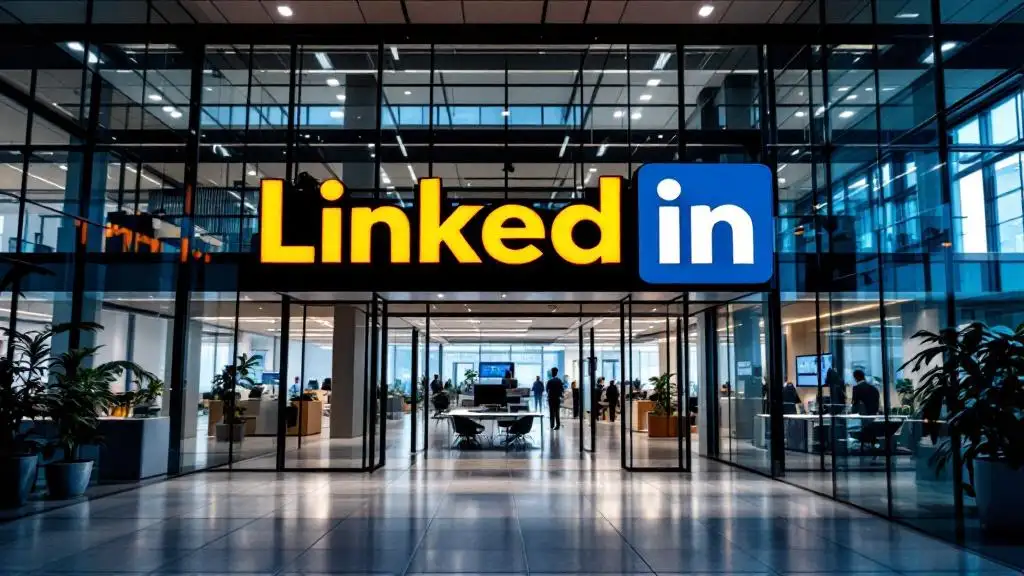Broken Link Building: The Complete Guide
Broken links, also known as dead links or 404 errors, are hyperlinks on a website that lead to non-existent or inaccessible web pages.


Broken Link Building: The Complete Guide
Understanding Broken Links
When it comes to healthcare SEO, understanding the impact of broken links is crucial. Broken links, also known as dead links or 404 errors, are hyperlinks on a website that lead to non-existent or inaccessible web pages. These broken links can have a detrimental impact on a website's SEO efforts and user experience.
Impact on SEO
Search engines, like Google, consider the quality and relevance of a website's links when ranking pages. When search engine crawlers encounter broken links, it can signal poor site maintenance and decrease the site's authority [1]. As a result, a website with a high number of broken links may experience a drop in search engine rankings. This can negatively impact the visibility and discoverability of the website's content.
Furthermore, broken links can inhibit the flow of link equity (also known as link juice) through all the pages of a website. Link equity plays a crucial role in how search engines assess the importance and relevance of web pages. When broken links hinder the passage of link equity, it can have a strong negative impact on a website's ranking [2].
User Experience Implications
In addition to SEO consequences, broken links can also have a significant impact on user experience. When site visitors encounter broken links, it can be frustrating and lead to a poor browsing experience. Users may feel disappointed, lose trust in the website, and navigate away, resulting in lost site visitors over time [3].
From a usability standpoint, broken links can disrupt the flow of information and hinder users' ability to access desired content. They can create roadblocks in the user journey, making it difficult for visitors to find the information they were seeking. This can lead to dissatisfaction and increase bounce rates, negatively affecting user engagement and conversion rates.
To overcome the impact of broken links on SEO and user experience, it is essential to regularly monitor and fix broken links on your website. Utilizing tools such as Broken Link Checker, Xenu's Link Sleuth, and Google Search Console can help identify and address broken links efficiently.
By proactively addressing broken links, you can improve website performance, enhance crawlability, increase search engine rankings, and provide a seamless user experience.
Tools for Detecting Broken Links
To effectively implement broken link building strategies, it is essential to have reliable tools for detecting broken links on websites. Here are three commonly used tools that can help identify and address broken links:
Broken Link Checker
One popular tool for finding broken links is the Broken Link Checker. This tool provides a comprehensive dashboard that reveals all the data related to broken site links, along with the cause of the problem. With this tool, website owners and SEO professionals can quickly identify broken links and take appropriate action to fix them.
Xenu’s Link Sleuth
Xenu’s Link Sleuth is a free and open-source tool that is widely used for finding broken links on websites [3]. It crawls through web pages, checking each link to identify any broken or dead links. Xenu's Link Sleuth provides a detailed report of broken links, allowing users to efficiently locate and fix the issues.
Google Search Console
Google Search Console, a powerful tool for webmasters, includes a broken link report option for monitoring websites for content with broken links. This feature helps identify internal 404 errors, incorrect URLs linked to your web pages, and external links returning 404 pages. By regularly checking the broken link report in Google Search Console, website owners can take necessary steps to rectify broken links, improving the overall user experience.
Using these tools, website owners and SEO professionals can proactively identify and resolve broken links, ensuring a smoother user experience and improving their healthcare SEO efforts. By fixing broken links, websites can maintain a positive online reputation and enhance their search engine rankings.
Benefits of Broken Link Building
When it comes to healthcare SEO marketing, broken link building has emerged as a valuable strategy for acquiring high-quality backlinks. This technique not only helps improve search engine rankings but also offers several other benefits.
White Hat Strategy
One of the key advantages of broken link building is that it is considered a white hat SEO practice. Unlike certain black hat techniques that violate search engine guidelines, broken link building is a legitimate and ethical approach to link building. It involves locating relevant broken pages and links on other websites and reaching out to webmasters to suggest replacing those broken links with links to your own site [4]. Being a white hat strategy, broken link building gains easier buy-in from clients and avoids the risk of penalties from search engines like Google [5].
Value-Oriented Approach
Another significant benefit of broken link building is its value-oriented approach. This strategy revolves around providing value to other webmasters and content creators by helping them fix broken links on their websites. By offering a relevant and high-quality replacement for a broken link, you not only enhance the user experience but also establish yourself as a reliable resource in the healthcare niche.
The backlinks acquired through broken link building are more likely to be seen as valuable by search engines. Since the links are obtained through a process of providing value and improving user experience, they are less likely to be flagged as spam or penalized. This ensures the long-term benefits of the acquired backlinks, contributing to the overall success of your healthcare SEO efforts [1].
By leveraging broken link building, healthcare websites can enhance their online presence, increase their authority, and attract a wider audience. This white hat strategy not only helps improve search engine rankings but also establishes valuable connections within the healthcare industry. So, consider incorporating broken link building into your link building in SEO examples to unlock its potential benefits for your healthcare SEO strategy.
Strategies for Broken Link Building
When it comes to broken link building, there are specific strategies that can increase the effectiveness of your outreach efforts. Crafting compelling outreach emails and utilizing personalized techniques can significantly boost your chances of success.
Outreach Email Crafting
Crafting a well-crafted outreach email is a fundamental aspect of broken link building. It is important to make your email stand out and capture the attention of the recipient. The email should be concise, yet informative, and clearly convey the value of your content.
To increase the likelihood of your email being opened and read, consider personalizing the subject line with the recipient's name or website. This small touch can make a significant difference in grabbing their attention.
When crafting the body of the email, make sure to introduce yourself and explain why you are reaching out. Clearly state that you have noticed a broken link on their website and offer your own relevant content as a replacement. Highlight the value and relevance of your content, emphasizing how it can benefit their audience. Including a link to the specific resource page where the broken link was found can make it easier for the recipient to reference and take action.
Remember to keep the email concise and to the point, as busy webmasters and site owners appreciate direct and clear communication. Lastly, don't forget to follow up on your initial outreach to increase the chances of a response. Persistence and a well-crafted pitch can go a long way in broken link building outreach.
Personalized Outreach Techniques
While sending outreach emails in bulk can be an efficient way to reach a larger audience, it's important to incorporate personalized techniques to enhance your success rate. Personalization shows that you have taken the time to research and understand the recipient's website, making your outreach more genuine and compelling.
Consider referencing specific articles or resources on their website that align with your content. This demonstrates that you have done your homework and adds a personal touch to your outreach. Additionally, addressing the recipient by name and tailoring your email based on their website's niche or industry can further enhance the personalization of your outreach.
Utilize tools and resources that enable large-scale outreach while still allowing for customization. These tools can help you efficiently manage and track your outreach efforts, ensuring that you are targeting the right websites and maximizing your chances of success. However, be mindful not to sacrifice personalization for efficiency, as a well-crafted and personalized outreach email can yield better results.
By employing effective outreach email crafting techniques and incorporating personalized strategies, you can increase the effectiveness of your broken link building campaign. Remember to focus on providing value to the recipient and clearly communicate the benefits of your content. With a thoughtful and personalized approach, you can increase the chances of securing valuable backlinks and enhancing your overall healthcare SEO efforts.
Implementation of Broken Link Building
Once you understand the benefits and strategies of broken link building, it's important to consider the implementation process. This section will cover two key aspects of implementing broken link building: scalability factors and finding resource pages.
Scalability Factors
When implementing broken link building, scalability is an important factor to consider. Scaling your efforts allows you to maximize the impact of your link building campaign. Here are a few key factors to keep in mind:
- Time Management: Broken link building can be a time-consuming process, as it involves identifying broken links, reaching out to webmasters, and building relationships. It's important to allocate sufficient time and resources to effectively execute your campaign.
- Targeting: To scale your efforts, it's essential to identify target websites that align with your niche or industry. Consider focusing on non-competitors within your vertical and also explore opportunities to claim broken links that previously linked to your competitors [5]. This approach allows you to expand your reach and increase the potential for successful link placements.
- Tools and Automation: Utilizing tools such as broken link checkers, email outreach automation, and project management software can help streamline the process and improve efficiency. These tools can assist in identifying broken links, managing outreach campaigns, and tracking progress.
By considering these scalability factors, you can ensure that your broken link building efforts are effective and efficient.
Finding Resource Pages
Resource pages are an excellent target for broken link building. These pages typically contain a curated list of helpful and relevant resources within a specific industry or topic. Here are some strategies for finding resource pages:
- Search Engines: Use search engines like Google to find resource pages related to your niche or industry. Use search queries such as "your keyword + resource page" or "best resources for your keyword." This can help you discover relevant pages that may contain broken links.
- Competitor Analysis: Analyze your competitors' backlink profiles to identify resource pages that have linked to them in the past. Tools like Ahrefs or SEMrush can assist in this process. By reaching out to the webmasters of these resource pages, you can offer your content as a replacement for broken links.
- Content Relevance: Ensure that the content you're offering as a replacement for broken links is highly relevant to the resource page's content and audience. This increases the chances of webmasters accepting your link placement.
Remember, when reaching out to webmasters, personalize your outreach emails and clearly explain how your content can provide value to their audience.
By implementing these strategies and considering scalability factors, you can effectively execute your broken link building campaign and enhance your healthcare SEO marketing efforts.
Importance of Fixing Broken Links
When it comes to healthcare SEO marketing, fixing broken links is an essential task that should not be overlooked. Broken links can have significant consequences on both SEO performance and user experience. Let's explore these consequences in more detail.
SEO Consequences
Search engines like Google consider the quality and relevance of a website's links when ranking pages. Therefore, a high number of broken links can negatively impact a website's SEO efforts. Search engines view broken links as a sign of poor site maintenance and may decrease the site's authority as a result. This can lead to a drop in search engine rankings and a decrease in organic traffic [1].
To maintain a strong SEO presence, it is crucial to regularly check for and fix broken links on your website. By ensuring that all links are functional and lead to the intended content, you can enhance the crawlability of your site and improve its overall online visibility. This, in turn, can positively impact your search engine rankings and drive more organic traffic to your healthcare website.
User Trust and Navigation
In addition to SEO consequences, broken links can also have a negative impact on user trust and navigation. When users encounter broken links on a website, it can lead to frustration and a poor user experience. Dead links make your website appear unprofessional and can erode trust in your brand or healthcare organization.
Moreover, broken links disrupt the smooth navigation of your website. Users may abandon their search or become hesitant to explore further when they encounter broken links. This can result in lost opportunities for engagement, conversions, and potential patients or clients.
By regularly monitoring and fixing broken links, you can ensure a seamless user experience, build trust with your audience, and provide them with valuable and relevant content. This can contribute to increased user engagement, longer site visits, and a higher likelihood of conversions.
In conclusion, fixing broken links is crucial for maintaining a strong healthcare SEO strategy and providing a positive user experience. By addressing broken links promptly, you can enhance your website's crawlability, improve search engine rankings, and build trust with your audience. Remember to regularly check for broken links and implement effective measures to ensure a seamless and rewarding user journey on your healthcare website.
References
[1]: https://blog.linkody.com/link-building/the-ultimate-guide-to-broken-link-building
[2]: https://www.outlookstudios.com/tools-to-find-broken-links-on-your-website/
[3]: https://www.supermonitoring.com/blog/tools-for-finding-broken-links/
[4]: https://www.vazoola.com/resources/broken-link-building







